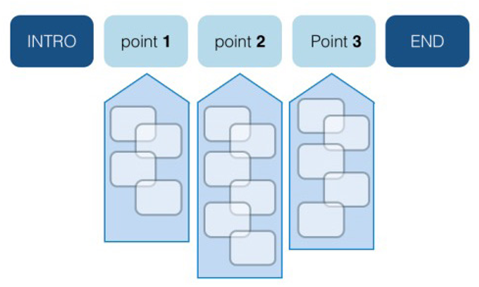
Note: Spoilers Ahead! If you haven’t already seen it, go and watch Don’t Look Up – and then come back to this blog to find out what the scientists in the film could have done to better connect and communicate with the policymakers involved!
Don’t Look Up gives us a terrifying example of what could happen when policymakers ignore the science. The film tells the story of two astronomers, PhD candidate Kate Dibiasky and her supervisor Dr Randall Mindy, who discover and attempt to warn everyone about a comet large enough to destroy humanity that will hit the Earth in just over six months. Although the scientists are 99.7% sure that the comet will make impact with the Earth, they have a tough time convincing the public, media, and key policymakers of the imminent threat. The situation depicted is an allegory for climate change, demonstrating the frustration that is felt within the climate science community at the lack of government action and public interest in the worsening climate emergency.
The film contains plenty of things to critique from the policymaking side (and there are several articles from scientists explaining these) but this blog post will exclusively focus on the techniques that the scientific experts could have used to better communicate their message and the risks involved. Although the decisions leading to the destruction of the planet were made by the film’s policymakers, the approaches taken by Dibiasky and Mindy influenced them. In reality, how we engage with policy, present information, and frame our message impacts how policymakers understand and use the information. Below are some of science for policy dos and don’ts inspired by the film that you may want to think about when engaging in the policymaking process.
DO – come prepared!
Dibiasky and Mindy were obviously in shock after their discovery and had very little time to process that the world was coming to an end in less than 6 months. To complicate things further, they were transported to the White House immediately and given no time to prepare, collect documents, or even pack a toothbrush. They were also made to wait hours upon hours before finally getting to meet the President and explain the situation to them. So it wasn’t surprising that they were unprepared and flustered during their initial meeting.
As a result, their presentation was unprepared, unstructured, focused too much on the technical details of how the meteor was sighted, and used jargon that wasn’t understood by their policy audience. With more time to prepare, the scientific team could have put together a short well-structured presentation, anticipated likely questions or concerns, and presented some policy options or solutions.
DO – understand who you’re talking to and frame your message
Ideally, evidence-informed policy is based on the best available information but to ensure this, scientists need to communicate in a way that is applicable and memorable. When preparing your presentation for policymakers, it is important to consider your target audience, what their motivations are, and what is likely to resonate with them. You can do this by looking at the other legislation the policymaker is working on, their background, and previous statements on similar topics.
You should also think about what your key message is and how you can communicate it effectively using a maximum of three points. While the situation depicted in Don’t Look Up is extreme, it is common for meetings with policymakers to be very short and it’s important for you to be able to present these points quickly but also to be able to go into more detail and support them with data, graphs, and anecdotes if there’s time. Using the structure shown below when creating your presentation may help you to identify the key points to share if you only have a few minutes with the policymaker as well as the information you can include to expand on each point if time permits.

Creating a presentation when you aren’t sure how much time you have can be tricky! This structure can help you remain more flexible. Credit:The European Commission Joint Research Centre’s Science for Policy Handbook
Towards the end of the meeting, it’s also a good idea to ask about what sort of information the policymaker still needs and give them the opportunity to ask any questions that they have. If Dibiasky or Mindy had done this in Don’t Look Up, it may have provided them with an opportunity to continue the dialogue and provide further information, policy options, or their recommendations, sooner.
DON’T – focus entirely on doom and gloom
Dibiasky or Mindy were, for obvious reasons, focused on the impact that the comet was going to have on humanity during their initial meeting with the President. But as the film pointed out,
“You cannot go around saying to people that there’s 100% chance that they’re gonna die.”
It’s important to be honest about the risk you’re communicating but you should also give people (including policymakers) options or potential solutions that they can focus on and work towards. Policymakers want to implement a policy that will lead to some form of positive outcome. If your only goal when meeting with them is to communicate how bad a situation is, they may not know what you want them to do about it or even feel that the meeting was a waste of their time.
DON’T – get dragged into politics
Peter Isherwell, the film’s entrepreneurial antagonist, was shown as being a charismatic, political donor with a “solution-orientated” mentality. He framed the comet as an opportunity to generate resources and Mindy was taken in by his appealing quick fix despite it not being backed by peer-reviewed evidence. Mindy even found himself advocating for it before realising that it was unlikely to work in practice. Not only did this damage his credibility, but the lack of critical voices from those who were already involved, prevented the policymakers from considering the very real risks involved with the option.
Connecting with non-policy stakeholders and getting them to engage with or even support your position can be an effective way to increase your legitimacy and amplify your message. However, it’s important to not get dragged into politics yourself or advocate for a message that isn’t backed by science. If a policymaker asks you to give them specific advice or advocate for a policy option that you aren’t comfortable with, it’s important to reiterate your position as an honest broker of policy alternatives and decline if need be.
Ultimately, the film underscores the importance of robust scientific advisory mechanisms and highlights the challenges that are often experienced by scientists when communicating with policymakers. Although it presents some extreme examples, many of you may have found yourself in similar situations, albeit hopefully to a lesser extent and in slightly less pressing circumstances! Hopefully next time you’re in the room with a policymaker, you’ll be able to implement some of these strategies and prevent your own metaphorical comet from hitting the Earth!




